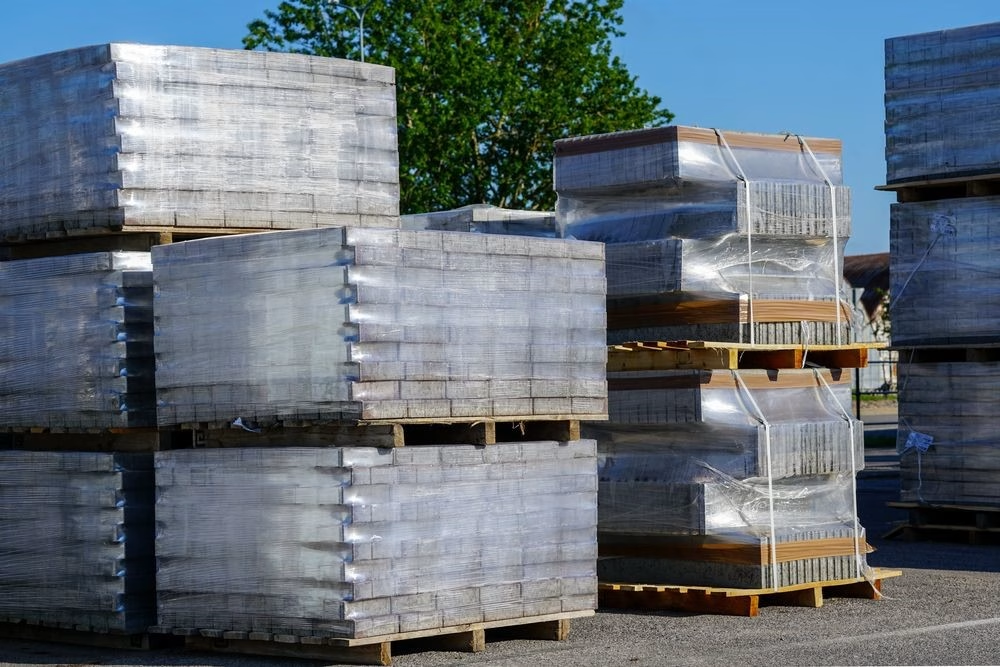All manufacturers of products, of any kind, must protect them before sending them to their destination. They cannot do this in any way, as they must arrive undamaged at the point of sale. Additionally, they need to apply protective measures to each item individually, and to all the items in a shipment together. Therefore, all companies that need to send the products they manufacture or purchase to another destination require machines that allow them to automate certain tasks to prepare them. Like a pallet wrapper. Discover what it is and what it’s for.
What is a pallet wrapper?
A pallet wrapper is an industrial machine used to wrap pallets (also called pallets) with products stacked on them for shipment to a distributor or to the establishment where they will be sold. It uses a thin, elastic, transparent plastic film, also known as stretch film. It is used when the products being sent to the same destination are all stacked on one pallet, and the machine wraps the products with this film. This way, they stay together, and their transportation is made easier. Additionally, it will prevent part of the load from being lost or damaged.
Currently, the pallet wrapper is not a manually operated machine. It automates the process of wrapping pallets with products to make the final result more efficient and secure. It also allows the workers responsible for preparing product shipments to focus on other tasks that require less effort and more delicate handling.
How does it work?
Each pallet wrapper has an automated axis responsible for distributing the stretch film evenly around the products on the pallet. But this is not the only important element of the machine. It also has a platform where the pallet with the products ready for wrapping is placed. This platform is rotating, so as it rotates, the products on the pallet get covered with film. The axis, meanwhile, stretches the film as it is placed around the load. In the end, when the pallet wrapper completes its work, the load with the products on the pallet is covered with transparent plastic on all four sides.
The load will make several turns around its axis, allowing it to be covered with multiple layers of stretch film. The number of layers will depend on what the operator programs for the machine to do. There is no fixed number of turns for a load to be well protected. The decision is made by the person in charge of protecting it in each case. This means that a pallet wrapper must surround and cover the load with transparent film until all the products on the pallet are properly secured and held.
The weight and dimensions of the products on the pallets have nothing to do with the number of turns the pallet wrapper must make to ensure they are well protected. They will only be secured when the products cannot be moved individually. Only then will the load be properly fixed. Only then can the plastic around it be sealed, and the pallet removed so the machine can continue the process of protecting other pallets.
When a pallet of products has gone through the wrapper and its load is compact and secured, it is ready for transport. However, generally, not just one pallet will be shipped; several pallets will go to the same destination. That’s why they are stored until all the pallets going to the same destination are ready and the truck picks them up. Since they are secured, each pallet with all the products can be moved at once, which makes handling and storing them easier.
What is a pallet wrapper used for?
As we have seen, a pallet wrapper is used to cover the load on a pallet with plastic so that it can be moved all at once. But that’s not all. By being grouped and protected, the products on a pallet won’t suffer damage when stored, moved, or transported. They will stay fixed in place, stuck to each other. This happens because the transparent film covering them is applied tightly. Of course, only enough to secure the load, not to damage the products it surrounds.
This is precisely another purpose of a pallet wrapper: to prevent all the load on a pallet from suffering damage, not just the serious ones that affect the products themselves but also their packaging. That is, with a pallet wrapper, both the product and its packaging are protected. The reason is simple: if the packaging of a product is damaged during transportation to its destination, it will have less chance of being sold. People will perceive it as defective, even if it’s in good condition, and it will be harder to sell.
But this machine not only has an effect on the safety and integrity of the products it protects. It also helps the workers in a company, as they won’t have to strain to manually wrap the products on a pallet. Additionally, the protection process will finish quicker, and the shipments can leave for their destination sooner. The machine is also capable of progressively adapting to the needs of the company using it. Therefore, it streamlines the packaging process, saving both costs and time.
This makes a pallet wrapper useful not only for all kinds of businesses and sectors where products are manufactured and transported, such as in the food or construction industries. It is also a future investment and an element that facilitates everything related to logistics and transportation. So, if in your company you need to move pallets of products safely while protecting them, get a pallet wrapper!
